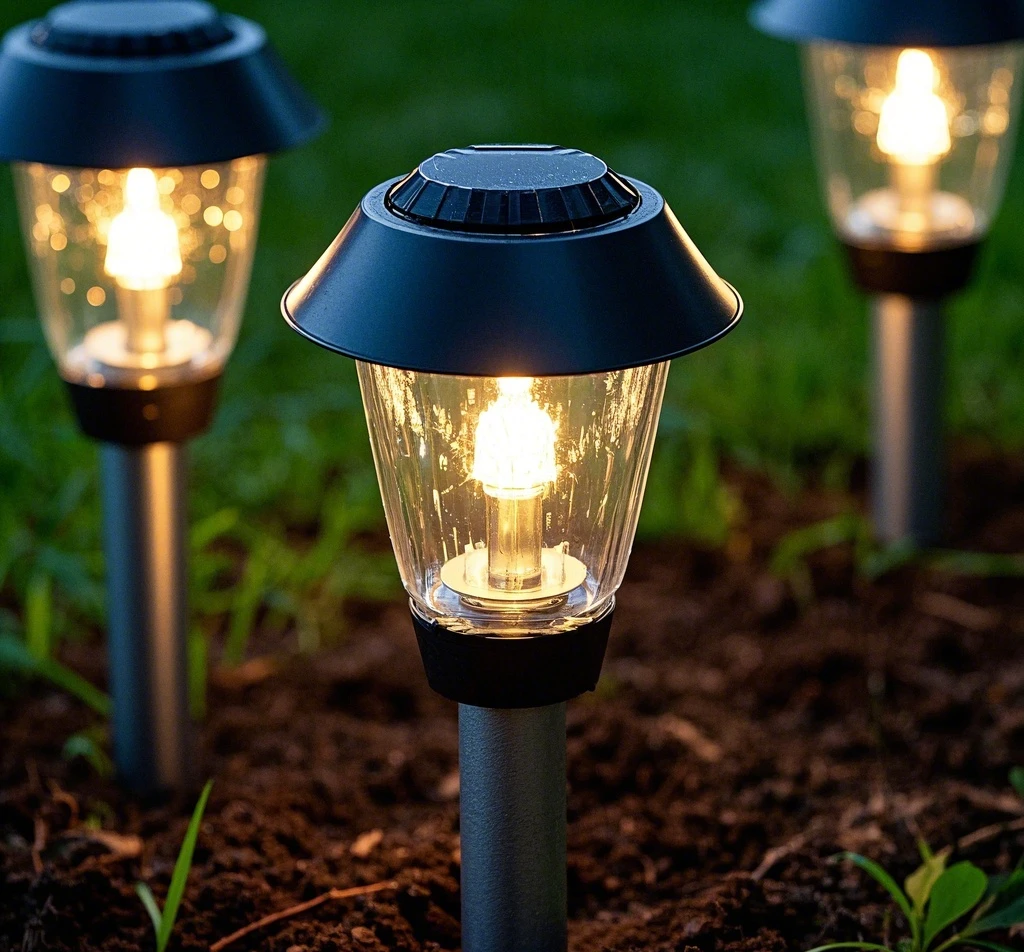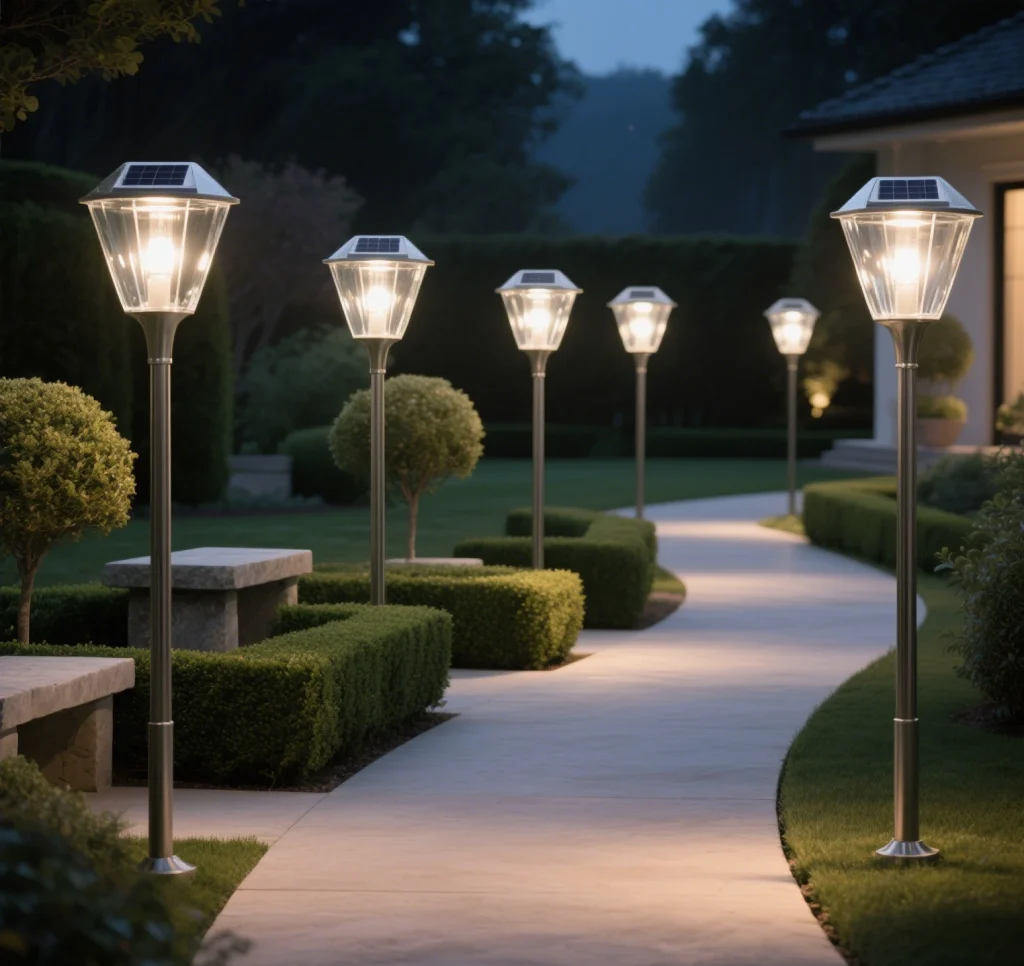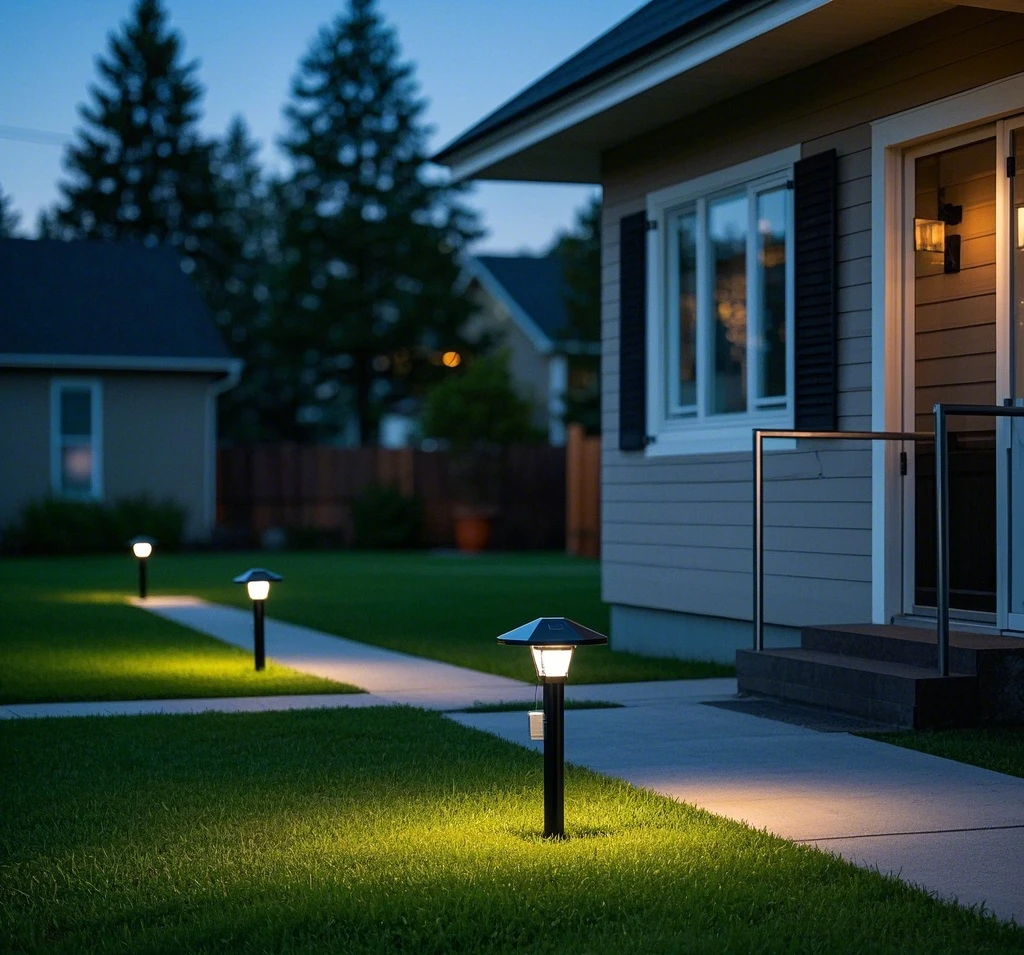Introduction to the Popularity of Inexpensive Solar Garden Lights
Inexpensive solar garden lights have surged in popularity as homeowners, renters, and outdoor enthusiasts seek affordable, eco-friendly solutions to illuminate gardens, pathways, patios, and balconies. These lights harness solar energy to power LED bulbs, eliminating electricity costs and the need for complex wiring, making them an accessible choice for enhancing outdoor spaces. Their low upfront cost, combined with zero operational expenses, appeals to budget-conscious consumers who want to create inviting, well-lit environments without breaking the bank. Inexpensive solar garden lights are particularly favored for their ease of installation, sustainability, and ability to add charm to any outdoor setting, from small urban balconies to sprawling rural gardens.

However, choosing inexpensive solar garden lights requires balancing cost-effectiveness with practicality. While low prices are attractive, prioritizing quality components, durability, and performance ensures long-term value. Poorly made lights may fail quickly, leading to frequent replacements and negating initial savings. This guide explores how to select cost-effective solar garden lights, methods to reduce usage costs, and recommended types that deliver both affordability and functionality, helping you make informed decisions for your outdoor lighting needs.
Key Points for Choosing Inexpensive Solar Garden Lights
Selecting the right inexpensive solar garden lights involves careful consideration of your needs, the quality of core components, and insights from user feedback. Here are the key factors to keep in mind:
Clarify Your Needs
Before purchasing, assess the specific requirements of your outdoor space. Consider the size of the area you want to illuminate and the desired lighting duration. For small gardens or pathways, lights with lower wattage (0.5–2 watts) and 50–100 lumens are often sufficient for ambient or decorative lighting. Larger spaces, such as expansive lawns or patios, may require brighter lights with 100–200 lumens. Style is also important—options like stake lights, string lights, or lanterns can complement your garden’s aesthetic. Determine whether you need lights for daily use (6–8 hours of illumination) or occasional events, as this impacts battery capacity and solar panel size. By clarifying these needs, you can avoid overspending on overly powerful lights or underperforming budget models.
Focus on the Cost-Effectiveness of Core Components
The cost-effectiveness of inexpensive solar garden lights hinges on the quality and balance of two critical components: the battery and the solar panel.
- Battery Capacity and Lifespan: Most affordable solar lights use nickel-metal hydride (Ni-MH) batteries (600–1200mAh), which offer 2–3 years or 500–800 charge-discharge cycles. Lithium-ion batteries, though slightly more expensive, provide longer lifespans (2–4 years) and better performance in varied temperatures. Look for lights with replaceable batteries to extend the product’s life without needing a full replacement. A battery capacity of 800mAh or higher ensures 6–10 hours of illumination after a full charge, ideal for most nighttime needs.
- Solar Panel Conversion Efficiency: The solar panel’s efficiency determines how effectively it converts sunlight into energy. Polycrystalline panels, common in budget models, offer 15–17% efficiency and are sufficient for most applications. Monocrystalline panels (18–20% efficiency) are pricier but charge faster, especially in low-light conditions. Ensure the panel size is adequate (at least 0.5–1 square inch per LED) to support the battery’s charging needs. Check for adjustable or detachable panels for optimal sunlight positioning, which enhances charging efficiency and reduces strain on the battery.
Balancing these components ensures you get reliable performance without overspending. For example, a light with a 1000mAh Ni-MH battery and a polycrystalline panel offers a good mix of affordability and functionality for small to medium gardens.
Reference to User Reviews
User reviews are invaluable for identifying inexpensive solar garden lights that deliver long-term value. Focus on feedback from verified buyers who have used the lights for at least 6–12 months, as this reveals durability and performance over time. Look for comments on brightness consistency, battery life, and weather resistance (e.g., IP65 or IP44 ratings for rain and dust protection). Avoid products with frequent complaints about dimming after a few months or panels failing in cloudy conditions, as these indicate low-quality components. Brands like TomCare, Brightech, and Solpex often receive praise for offering reliable, budget-friendly options with solid performance, based on reviews from 2024–2025. Be cautious of overly cheap lights (under $10 for a set) from unknown brands, as they may use substandard batteries or panels, leading to rapid failure.
Methods for Reducing the Cost of Using Inexpensive Solar Garden Lights
While inexpensive solar garden lights are already cost-effective due to their solar-powered operation, strategic installation and maintenance can further reduce long-term costs by improving efficiency and minimizing replacements.
Rational Installation Location Planning
Proper placement of solar garden lights maximizes charging efficiency and extends battery life, reducing the need for frequent replacements. Position the solar panel in an area that receives 6–8 hours of direct sunlight daily, ideally facing south in the Northern Hemisphere. Avoid shaded spots under trees, eaves, or structures, as shadows reduce charging capacity and strain the battery. For stake lights, ensure the ground is soft enough for secure installation but firm enough to hold the light steady in wind. For string lights or lanterns, use clips or hooks to secure them in sunny locations, such as along fences or pergolas. If the panel is detachable, adjust its angle seasonally to capture optimal sunlight (e.g., steeper angles in winter). Efficient charging ensures the battery powers the light for the full night, prolonging its lifespan and saving replacement costs.
Simple Maintenance Tips
Low-cost maintenance practices can significantly extend the life of inexpensive solar garden lights, keeping them functional without additional expenses.
- Cleaning the Solar Panel: Dust, dirt, or debris on the solar panel can reduce charging efficiency by up to 30%. Clean the panel every 1–2 months with a soft, damp cloth to remove buildup. Avoid abrasive materials that could scratch the surface, as this impairs light absorption. In areas with heavy pollen or dust, increase cleaning frequency to every 3–4 weeks.
- Checking the Wiring and Battery Compartment: Inspect the battery compartment and wiring (if applicable) every 3–6 months for signs of corrosion, water ingress, or loose connections. For waterproof models (IP65 or higher), ensure seals are intact. If corrosion is present, clean it gently with a cotton swab and vinegar, then dry thoroughly. For replaceable batteries, check their condition annually and replace them if illumination time drops significantly.
- Storage During Off-Seasons: In regions with harsh winters or prolonged cloudy periods, store lights indoors to protect them from extreme cold or snow, which can degrade batteries. Remove batteries during storage to prevent leakage. This simple step can add 1–2 years to the light’s lifespan, reducing replacement costs.
These maintenance practices require minimal time and cost, ensuring your lights remain bright and functional for years.

Recommended Cost-Effective Solar Garden Light Types
Several types of inexpensive solar garden lights offer excellent value by meeting basic lighting needs or combining functionality with simple decoration. Here are two categories that stand out for affordability and practicality:
Basic Lighting
Basic solar garden lights are designed for everyday illumination, providing sufficient brightness for pathways, garden borders, or small patios at a low cost. These typically include stake lights or small lanterns with 1–2 LEDs per unit, delivering 50–100 lumens. Models like the Solpex 8-Pack Solar Pathway Lights ($25–$35 for a set) feature 800mAh Ni-MH batteries and polycrystalline panels, offering 6–8 hours of warm white light. They’re ideal for marking walkways or outlining garden beds without overwhelming the space. Their simple design and durable ABS plastic construction ensure weather resistance (IP65) and longevity, making them a budget-friendly choice for daily use. User reviews from 2025 highlight their reliability and ease of installation, with minimal maintenance required.
Multifunctional Simple
Multifunctional solar lights combine basic lighting with decorative elements, offering versatility at a low overall cost. These include string lights, fairy lights, or stake lights with unique designs, such as firefly-inspired swaying LEDs or lantern-style pendants. For example, the Brightech Ambience Pro Solar String Lights ($30–$40 for 27 feet) feature 12–20 LEDs with a 1000mAh battery, providing 6–10 hours of illumination in warm white or multicolored modes. These are perfect for wrapping around trees, fences, or pergolas to add ambiance to patios or event spaces. Their IP55 rating ensures durability in rain, and the flexible design allows creative arrangements. Reviews praise their balance of affordability and aesthetic appeal, making them a cost-effective choice for both daily and occasional use.
Both types offer excellent value, with basic lighting suited for functional needs and multifunctional lights adding a decorative touch without a high price tag.
Summary of Choosing Inexpensive Solar Garden Lights
Inexpensive solar garden lights offer a perfect blend of affordability, sustainability, and style for enhancing outdoor spaces. Their popularity stems from low upfront costs, zero electricity bills, and easy installation, making them accessible to a wide range of users. However, achieving true cost-effectiveness requires balancing the initial investment with long-term operational costs. By selecting lights with reliable batteries (e.g., 800mAh Ni-MH or lithium-ion) and efficient solar panels (polycrystalline or monocrystalline), users can ensure consistent performance without frequent replacements.
To maximize value, clarify your lighting needs based on garden size and usage, prioritize quality components, and consult user reviews to avoid low-quality products. Rational installation in sunny locations and simple maintenance practices, such as regular panel cleaning and battery checks, can significantly reduce costs by extending inexpensive solar garden lights lifespan. Choosing between basic lighting for daily needs or multifunctional lights for added decoration allows you to tailor your purchase to your specific requirements.
Ultimately, the key to enjoying inexpensive solar garden lights lies in thoughtful selection and proactive maintenance. By investing in reliable, budget-friendly models and following best practices, you can create a beautifully lit outdoor space that’s both cost-effective and environmentally friendly, illuminating your garden for years to come.


Leave a Reply